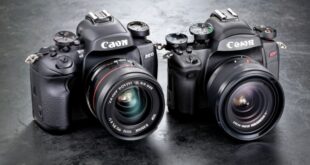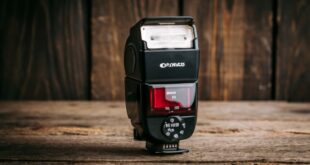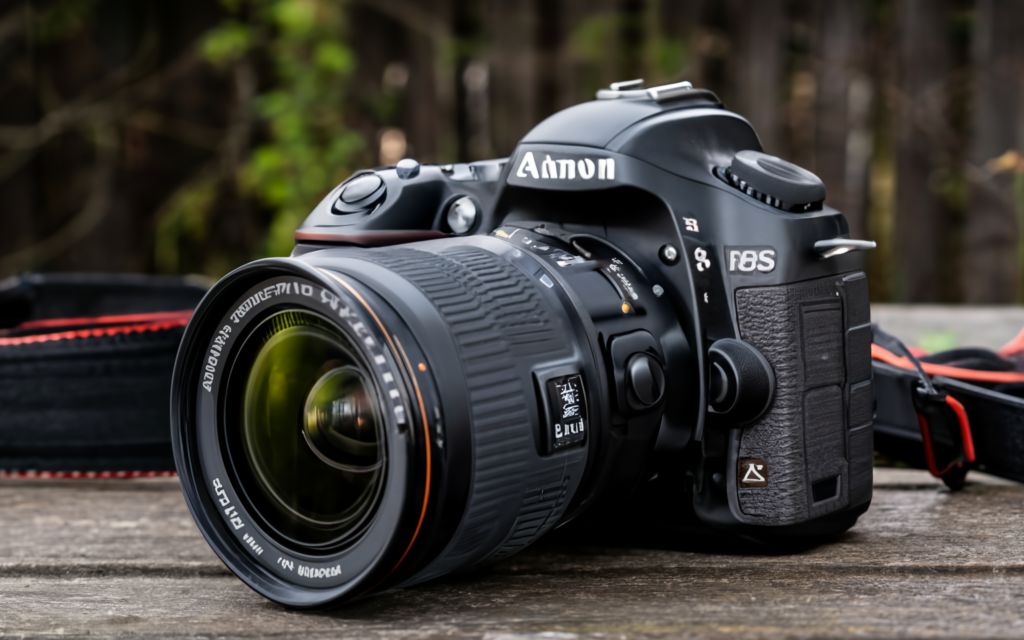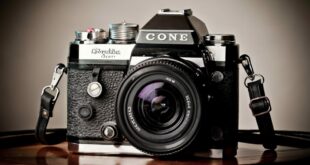Introduction
Hello everyone, and welcome to our guide on the best DSLR cameras to start with. If you’re passionate about photography and want to take your skills to the next level, investing in a DSLR camera is the way to go. DSLR cameras offer superior image quality, manual controls, and versatility that can enhance your photography experience.
In this article, we will explore the top 7 DSLR cameras that are perfect for beginners. Whether you’re a hobbyist or aspiring professional photographer, these cameras will provide you with the right set of features to kickstart your photographic journey. So, let’s dive in and find the perfect DSLR camera for you!
Important Points to Consider
📷 Image quality is crucial for capturing stunning photographs.
🔍 Look for cameras with user-friendly interfaces and intuitive controls.
💡 Consider the versatility and expandability of the camera system.
🎥 Check for video capabilities, especially if you’re interested in videography.
📸 Keep your budget in mind and choose a camera that fits your financial constraints.
📷 Consider the size and weight of the camera for portability.
💪 Look for cameras with good autofocus performance to capture sharp images.
1. Canon EOS Rebel T7i
The Canon EOS Rebel T7i is a fantastic entry-level DSLR camera that offers excellent image quality and performance. With its 24.2-megapixel APS-C CMOS sensor and DIGIC 7 image processor, you can capture sharp and vibrant images. Its vari-angle touchscreen display and user-friendly interface make it a great choice for beginners.
Advantages:
✅ Excellent image quality and low light performance.
✅ Fast and accurate autofocus system.
✅ Intuitive interface with a vari-angle touchscreen.
Disadvantages:
❌ Limited 1080p video capabilities.
❌ No in-body image stabilization.
❌ Slightly limited burst shooting speed.
2. Nikon D3500
The Nikon D3500 is another top-notch DSLR camera suitable for beginners. It features a 24.2-megapixel APS-C CMOS sensor and an EXPEED 4 image processor, delivering impressive image quality. The D3500 is known for its user-friendly design, compact size, and lightweight build, making it ideal for photographers on the go.
Advantages:
✅ Excellent image quality and low light performance.
✅ Easy to use with intuitive controls.
✅ Compact and lightweight for portability.
Disadvantages:
❌ No built-in Wi-Fi or touchscreen.
❌ Limited video shooting capabilities.
❌ Fixed LCD screen.
3. Sony Alpha A6000
The Sony Alpha A6000 is a mirrorless camera that boasts a powerful 24.3-megapixel APS-C CMOS sensor and a fast hybrid autofocus system. This camera offers exceptional image quality, high-speed continuous shooting, and an extensive range of compatible lenses. With its compact size and easy-to-use interface, it’s an excellent choice for beginners.
Advantages:
✅ Outstanding image quality and rapid autofocus.
✅ Compact and lightweight for travel photography.
✅ Wide range of compatible lenses.
Disadvantages:
❌ Limited battery life.
❌ No touchscreen or in-body image stabilization.
❌ Older BIONZ X image processor.
4. Canon EOS 90D
The Canon EOS 90D is a versatile DSLR camera that offers a blend of high-resolution photography and impressive video capabilities. With its 32.5-megapixel APS-C CMOS sensor and DIGIC 8 image processor, it delivers excellent image quality and detail. The 90D also features a weather-sealed body, making it suitable for various shooting conditions.
Advantages:
✅ High-resolution sensor for detailed images.
✅ Great autofocus performance.
✅ 4K video recording with no crop.
Disadvantages:
❌ No in-body image stabilization.
❌ Limited dynamic range compared to full-frame cameras.
❌ Heavier and bulkier compared to entry-level DSLRs.
5. Nikon D5600
The Nikon D5600 is a user-friendly DSLR camera packed with impressive features. It comes with a 24.2-megapixel APS-C CMOS sensor and an EXPEED 4 image processor, offering excellent image quality and low light performance. The D5600’s articulating touchscreen display and built-in Wi-Fi make it a joy to use and share your photos instantly.
Advantages:
✅ Excellent image quality and low noise performance.
✅ Intuitive touchscreen interface.
✅ Built-in Wi-Fi for seamless photo sharing.
Disadvantages:
❌ Limited video capabilities with no 4K support.
❌ No in-body image stabilization.
❌ Autofocus during live view can be sluggish.
6. Fujifilm X-T200
The Fujifilm X-T200 is a stylish and compact mirrorless camera that combines aesthetics with outstanding performance. It features a 24.2-megapixel APS-C CMOS sensor and a fast autofocus system, ensuring sharp and detailed images. The X-T200 also excels in video recording, offering 4K capabilities and advanced features for creative videography.
Advantages:
✅ Excellent image quality with Fujifilm’s renowned color reproduction.
✅ Lightweight and portable for everyday shooting.
✅ 4K video recording with various creative options.
Disadvantages:
❌ No in-body image stabilization.
❌ Smaller lens selection compared to other brands.
❌ Lacks weather sealing.
7. Pentax K-70
The Pentax K-70 is a rugged and weather-sealed DSLR camera suitable for outdoor and adventurous photography. It boasts a 24.2-megapixel APS-C CMOS sensor and a PRIME MII image processor, delivering excellent image quality and noise reduction. The K-70 also features in-body image stabilization, making it a great option for handheld shooting.
Advantages:
✅ Exceptional image quality and impressive noise reduction.
✅ Weather-sealed body for outdoor photography.
✅ In-body image stabilization for handheld shooting.
Disadvantages:
❌ Limited autofocus points compared to other models.
❌ Smaller lens selection.
❌ No 4K video recording.
Comparison Table – Best DSLR Cameras to Start With
| Camera Model | Image Quality | Autofocus Performance | Video Capabilities | Portability |
|---|---|---|---|---|
| Canon EOS Rebel T7i | Excellent | Fast and accurate | 1080p | Medium |
| Nikon D3500 | Excellent | Good | 1080p | High |
| Sony Alpha A6000 | Outstanding | Rapid autofocus | 1080p | High |
| Canon EOS 90D | Excellent | Great | 4K | Medium |
| Nikon D5600 | Excellent | Good | 1080p | Medium |
| Fujifilm X-T200 | Excellent | Fast | 4K | High |
| Pentax K-70 | Exceptional | Good | 1080p | High |
Frequently Asked Questions (FAQ)
1. What is the best DSLR camera for beginners?
The Canon EOS Rebel T7i is one of the best DSLR cameras to start with due to its excellent image quality and user-friendly interface.
2. Does the Nikon D3500 have Wi-Fi connectivity?
No, the Nikon D3500 does not have built-in Wi-Fi, but it is compatible with Nikon’s wireless adapter for easy photo sharing.
3. Can I shoot professional-quality videos with the Sony Alpha A6000?
While the Sony Alpha A6000 is primarily known for its photography capabilities, it can also capture high-quality videos with its fast hybrid autofocus system.
4. Does the Canon EOS 90D have weather sealing?
Yes, the Canon EOS 90D is weather-sealed, allowing you to shoot in various weather conditions without worrying about damage to the camera.
5. Is the Nikon D5600 suitable for vlogging?
The Nikon D5600 can be used for vlogging due to its excellent image quality, but it lacks 4K video recording which may be desired by some vloggers.
6. Can the Fujifilm X-T200 be used for professional photography?
The Fujifilm X-T200 is suitable for both amateur and professional photography due to its outstanding image quality and advanced features.
7. What are the advantages of in-body image stabilization?
In-body image stabilization helps to reduce camera shake and allows for sharper images, especially in low light conditions or when using telephoto lenses.
Conclusion
After carefully considering the top 7 DSLR cameras for beginners, it’s clear that each model has its own strengths and weaknesses. The Canon EOS Rebel T7i stands out for its excellent image quality and user-friendly interface, making it a great choice for beginners. If portability is a key factor, the Nikon D3500’s compact size and lightweight build make it a fantastic option. For those interested in videography, the Sony Alpha A6000 offers outstanding video capabilities.
Remember to weigh your priorities, such as image quality, autofocus performance, video capabilities, portability, and budget, when selecting the best DSLR camera for your needs. Ultimately, any of these 7 cameras will provide a solid foundation for your photography journey.
Now, it’s time to grab your camera and start capturing breathtaking moments. Happy shooting!
Closing Statement
In conclusion, investing in a DSLR camera is a pivotal step towards honing your photography skills. The best DSLR cameras to start with provide exceptional image quality, intuitive controls, and features that cater to your specific needs. Before making a purchase, thoroughly consider the advantages and disadvantages of each camera, as well as your individual requirements and budget.
Remember, practice makes perfect, so don’t be afraid to experiment and explore the possibilities with your new DSLR camera. We hope this article has provided you with valuable insights and guidance in finding the perfect DSLR camera to embark on your photographic journey.
Disclaimer: The information provided in this article is based on our research and expertise. Prices and specifications may vary over time, so we recommend checking with the manufacturer or authorized retailers for the most up-to-date information.
Related video of 7 Best DSLR Cameras to Start With


